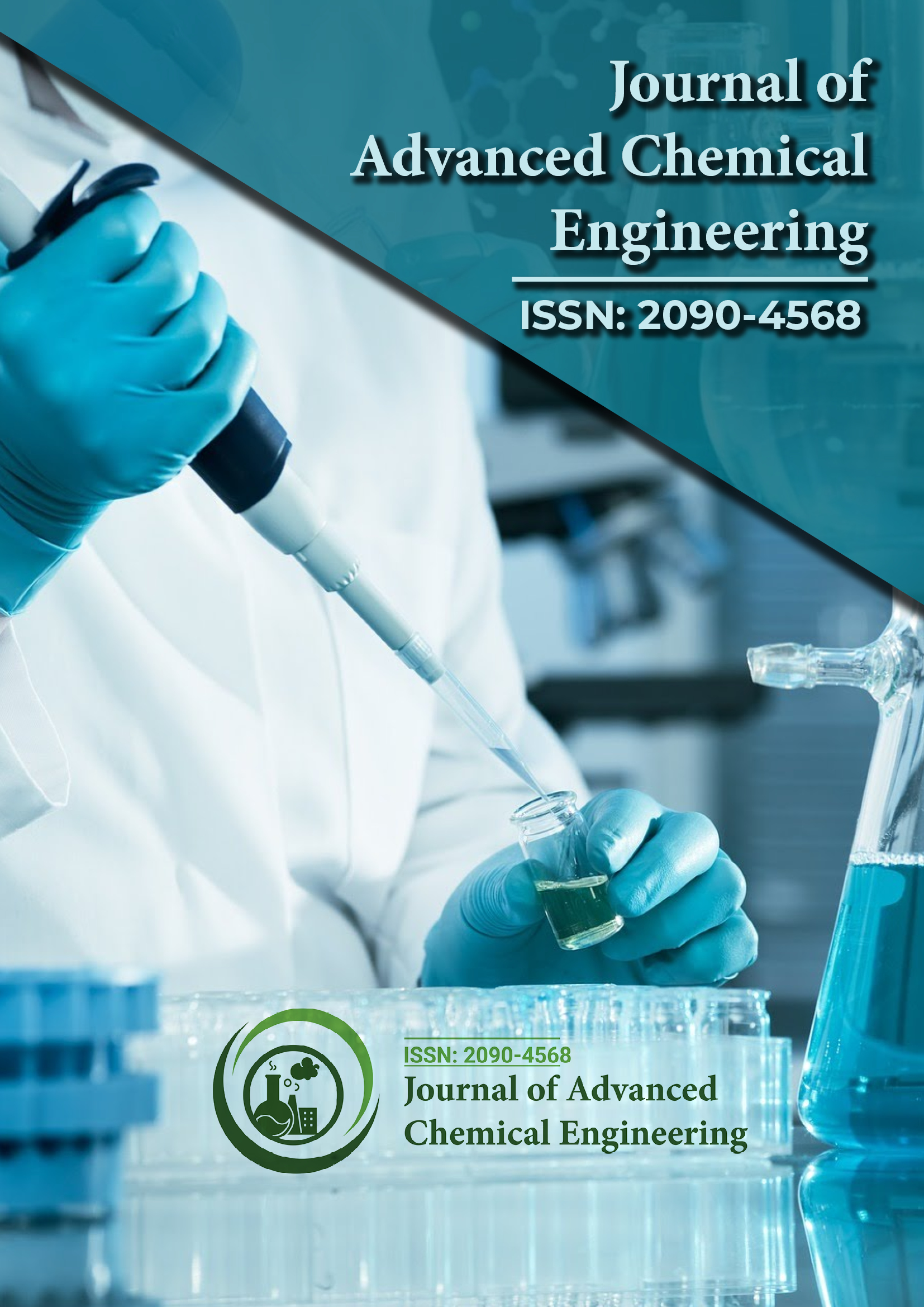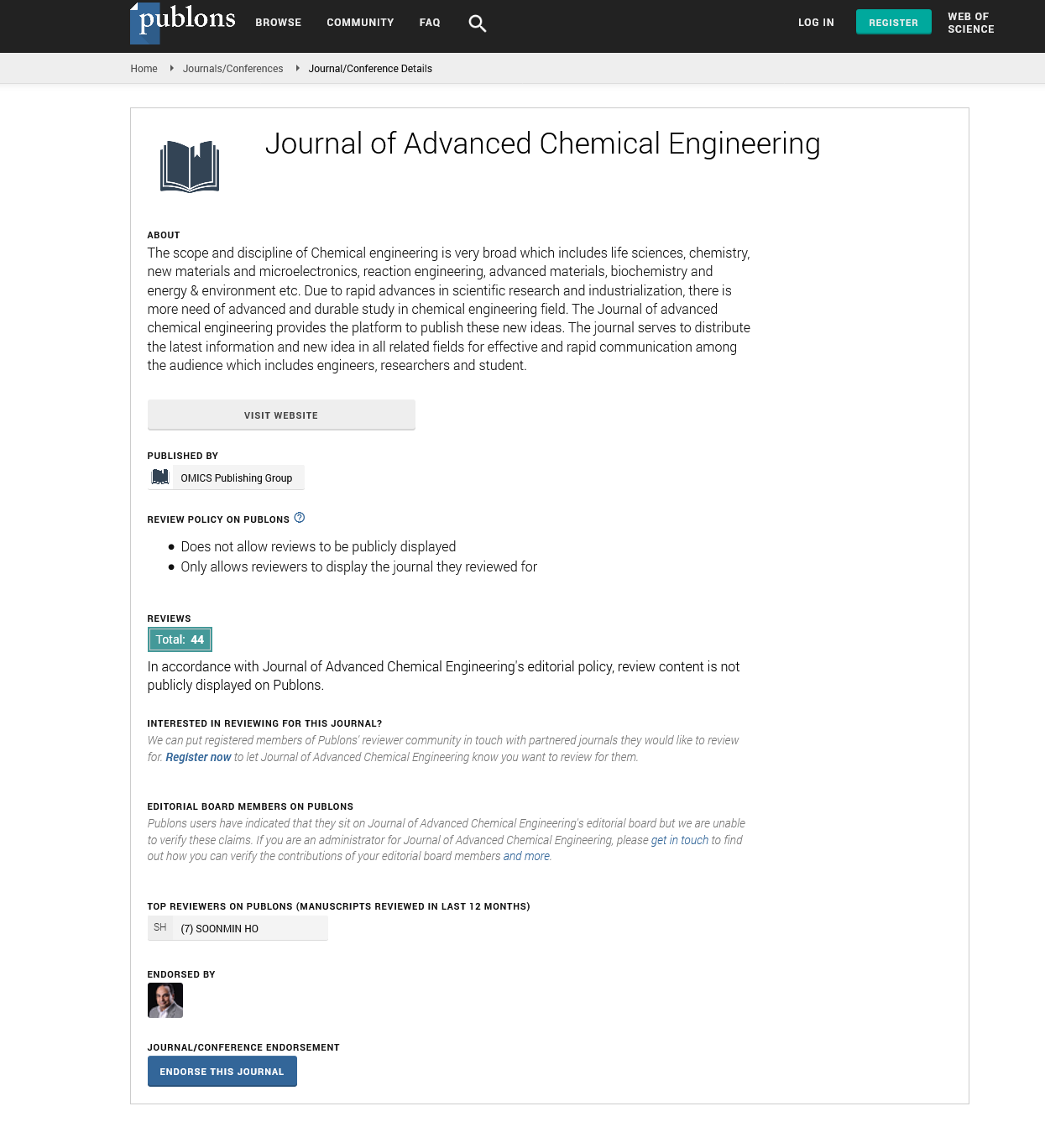Indexed In
- Open J Gate
- Genamics JournalSeek
- Smithers Rapra
- RefSeek
- Directory of Research Journal Indexing (DRJI)
- Hamdard University
- EBSCO A-Z
- OCLC- WorldCat
- Scholarsteer
- Publons
- Geneva Foundation for Medical Education and Research
- Google Scholar
Useful Links
Share This Page
Journal Flyer

Open Access Journals
- Agri and Aquaculture
- Biochemistry
- Bioinformatics & Systems Biology
- Business & Management
- Chemistry
- Clinical Sciences
- Engineering
- Food & Nutrition
- General Science
- Genetics & Molecular Biology
- Immunology & Microbiology
- Medical Sciences
- Neuroscience & Psychology
- Nursing & Health Care
- Pharmaceutical Sciences
Commentry - (2024) Volume 14, Issue 3
Chemical Reactions and Energy Transformations: Impacts on Grain Degradation
Emily Carter*Received: 30-Aug-2024, Manuscript No. ACE-24-28335; Editor assigned: 02-Sep-2024, Pre QC No. ACE-24-28335 (PQ); Reviewed: 16-Sep-2024, QC No. ACE-24-28335; Revised: 23-Sep-2024, Manuscript No. ACE-24-28335 (R); Published: 30-Sep-2024, DOI: 10.35248/2090-4568.24.14.344
Description
Thermodynamics-based constitutive modeling has emerged as an innovative approach in understanding and predicting the behavior of chemically-induced grain degradation in cohesive granular materials. These materials, which include soils, sediments and certain geological formations, exhibit complex interactions at the microscale that significantly influence their macroscopic properties. Chemical interactions, grain dissolution and degradation processes often lead to structural changes, posing challenges in accurately capturing their behavior under various environmental and loading conditions.
The integration of thermodynamics into constitutive modeling provides a strong framework to address these complexities. Thermodynamics, rooted in principles of energy conservation and entropy, allows for the systematic analysis of energy transformations and material responses during chemical degradation. By incorporating thermodynamic principles, researchers can develop models that account for the exchange between chemical reactions and mechanical behavior, providing insights into material stability, deformation and failure mechanisms.
A fundamental aspect of thermodynamics-based constitutive modeling is its ability to describe the energy balance within a system. Chemically-induced grain degradation often involves reactions such as dissolution, precipitation and ion exchange, which alter the internal energy and microstructure of granular materials. These reactions are driven by chemical potential gradients and are influenced by environmental factors such as temperature, pressure and pH. The thermodynamic framework enables the quantification of these processes, linking chemical energy changes to mechanical responses.
One of the fundamental challenges in modeling chemicallyinduced grain degradation is capturing the evolving microstructure and its impact on macroscopic properties. Grain degradation leads to changes in particle size distribution, surface roughness and inter-particle forces, which collectively influence the material's mechanical behavior. Thermodynamics-based models incorporate parameters such as free energy and entropy to describe these changes, providing a holistic understanding of material evolution. This approach is particularly advantageous for cohesive granular materials, where inter-particle forces, such as van der Waals forces and chemical bonding, play a major role in determining the material's strength and stability.
The combination of chemical and mechanical processes is another critical aspect addressed by thermodynamics-based constitutive modeling. Grain degradation alters the contact mechanics between particles, affecting load transfer, deformation and failure mechanisms. By integrating chemical reaction kinetics with mechanical behavior, these models can predict the coupled effects of chemical and mechanical loading. For instance, in geotechnical applications, such as the stability of embankments or the behavior of chemically treated soils, the ability to simulate these coupled effects is essential for accurate predictions and effective engineering solutions.
Advancements in computational techniques have significantly enhanced the application of thermodynamics-based constitutive models. Numerical methods, such as finite element analysis and discrete element modeling, provide the tools to implement and solve complex equations derived from thermodynamic principles. These methods allow for the simulation of grain degradation processes at different scales, from the microscale interactions between individual particles to the macroscale behavior of the granular assembly. The integration of computational techniques with thermodynamics-based models has opened new methods for exploring the complex exchange between chemical and mechanical processes.
The importance of experimental validation cannot be overstated in the development of thermodynamics-based constitutive models. Laboratory experiments provide essential data on chemical reaction rates, mechanical properties and microstructural changes during grain degradation. Techniques such as Scanning Electron Microscopy (SEM), X-Ray Diffraction (XRD) and Energy-Dispersive Spectroscopy (EDS) enable detailed characterization of the material's microstructure and chemical composition. These experimental insights inform the formulation of constitutive models, ensuring their accuracy and reliability in predicting real-world behavior.
In conclusion, thermodynamics-based constitutive modeling represents a powerful approach for understanding and predicting the behavior of cohesive granular materials undergoing chemically-induced grain degradation. By combining principles of thermodynamics with mechanical behavior, these models provide a comprehensive framework for analyzing the complex exchange between chemical reactions and material responses. While challenges remain, advancements in computational techniques, experimental methods and interdisciplinary research hold great potential for furthering this field. The insights gained from thermodynamics-based models have the potential to inform a wide range of applications, from infrastructure design to environmental remediation, contributing to the sustainable development and management of natural and engineered systems.
Citation: Carter E (2024). Chemical Reactions and Energy Transformations: Impacts on Grain Degradation. Adv Chem Eng. 14:344.
Copyright: © 2024 Carter E. This is an open access article distributed under the terms of the Creative Commons Attribution License, which permits unrestricted use, distribution, and reproduction in any medium, provided the original author and source are credited.

